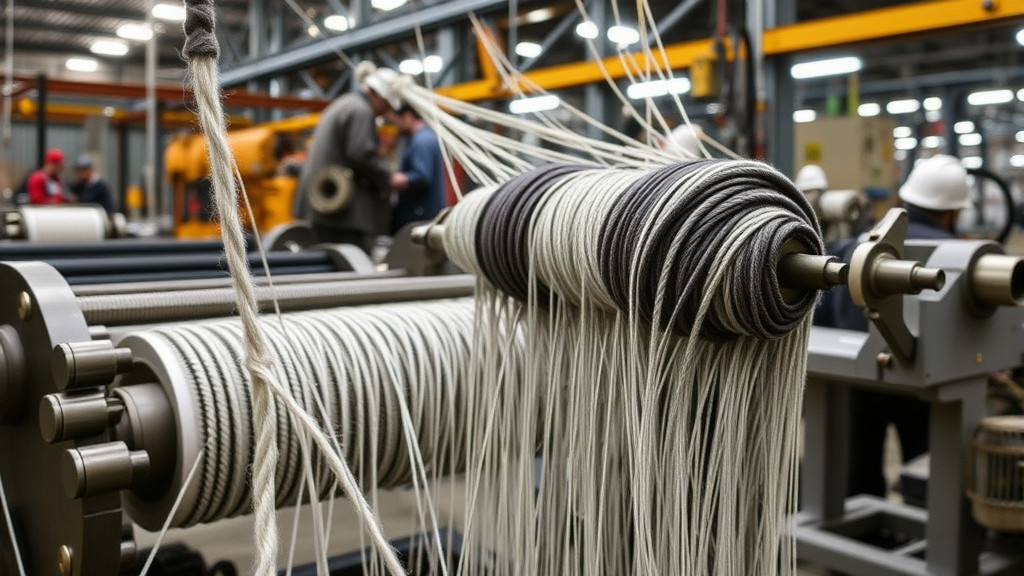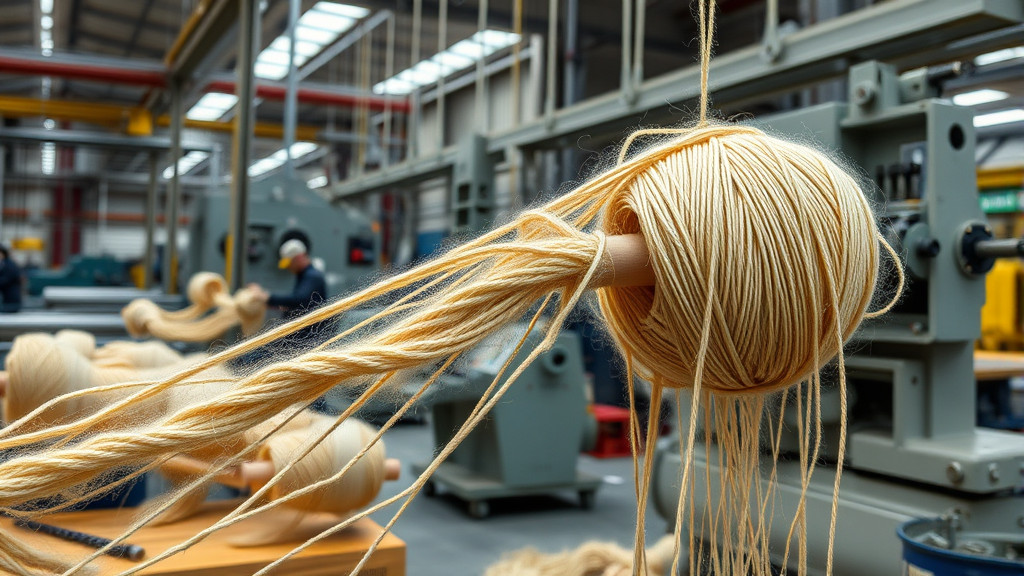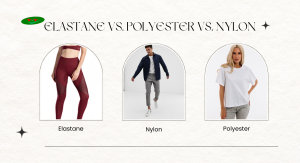Rubber covered yarn is a specialized material that combines the strength and durability of traditional yarn with the elasticity and versatility of rubber. This unique combination allows for a wide range of applications across various industries, from textiles to automotive manufacturing. As we delve deeper into this article, we will explore the definition, benefits, applications, processes, innovations, and success stories related to rubber covered yarn.
Definition and Composition of Rubber Covered Yarn

Rubber covered yarn is essentially a type of yarn that has been coated or wrapped with rubber material. The base yarn can be made from various fibers such as cotton, polyester, nylon, or other synthetic materials, which provide strength and flexibility. The rubber coating enhances the yarn’s performance by providing additional stretchability, water resistance, and improved durability.
The composition of rubber covered yarn typically includes a core yarn and a rubber outer layer. The core provides structural integrity, while the rubber coating imparts desirable properties such as resistance to abrasion, chemical exposure, and temperature fluctuations. Depending on the intended application, different types of rubber compounds may be used, including natural rubber, synthetic rubber, or blends of both.
Key Components of Rubber Covered Yarn
The main components of rubber covered yarn include:
- Core Yarn: This is the foundational element, providing tensile strength and stability. Commonly used fibers include cotton, polyester, and nylon.
- Rubber Coating: The outer layer of rubber adds elasticity and enhances resistance to wear and tear. The choice of rubber depends on the end-use requirements.
- Adhesive Agents: These substances are often used to ensure strong bonding between the rubber and the core yarn, enhancing the overall durability of the product.
The careful selection of these components ensures that rubber covered yarn meets specific industry standards and performance expectations, making it highly versatile for various applications.
Properties of Rubber Covered Yarn
Rubber covered yarn exhibits several distinct properties that contribute to its popularity in industrial applications:
- Elasticity: The inherent stretchiness of rubber allows the yarn to return to its original shape after being stretched, making it suitable for products that require flexibility.
- Durability: The rubber coating protects the core yarn from environmental wear and tear, significantly extending the lifespan of the final product.
- Chemical Resistance: Many formulations of rubber covered yarn resist chemicals, oil, and moisture, allowing it to maintain functionality in challenging environments.
These properties make rubber covered yarn an attractive option for manufacturers looking to improve the performance of their products.
Benefits of Using Rubber Covered Yarn in Various Industries
The use of rubber covered yarn offers numerous advantages across multiple sectors. In this section, we will explore some of the key benefits that make it a popular choice for manufacturers and consumers alike.
Enhanced Durability and Longevity
One of the most significant benefits of rubber covered yarn is its durability. The rubber coating protects the underlying yarn from damage caused by abrasion, UV exposure, and harsh weather conditions. This increased resilience translates to a longer product life cycle, reducing the need for frequent replacements and ultimately lowering costs for manufacturers.
Furthermore, the longevity of rubber covered yarn makes it ideal for applications where strength and wear resistance are critical. For instance, in the automotive industry, rubber covered yarn is used in belts and hoses that endure constant stress and strain. By using this advanced material, companies can ensure that their products perform effectively over extended periods.
Versatility Across Multiple Applications
Rubber covered yarn is incredibly versatile and can be adapted for use in a variety of applications. From industrial purposes such as conveyor belts and lifting slings to consumer products like socks and elastic bands, the adaptability of rubber covered yarn makes it a valuable asset for manufacturers.
Additionally, the ability to customize rubber covered yarn by altering its composition allows manufacturers to meet specific performance criteria. Whether it’s for increased stretchability, enhanced grip, or improved moisture resistance, rubber covered yarn can be tailored to suit diverse needs across industries.
Cost-Effectiveness
Although rubber covered yarn might have a higher upfront cost compared to standard yarns, its longevity and reduced maintenance make it a cost-effective alternative in the long run. Manufacturers who invest in high-quality rubber covered yarn benefit from lower replacement rates and decreased production downtime due to equipment failures.
Moreover, the efficiency gained from using durable materials translates to better productivity and higher profit margins for businesses. These factors contribute to the growing preference for rubber covered yarn in various sectors.
Applications of Rubber Covered Yarn in Everyday Life
The applications of rubber covered yarn extend far beyond industrial uses; they also play a significant role in everyday life. This section explores how this innovative material impacts our daily experiences.
Footwear Industry
In the footwear industry, rubber covered yarn is often used in shoelaces, providing the necessary stretch and support for optimal comfort. Unlike traditional laces, rubber covered laces offer superior elasticity, allowing for a snug fit without compromising ease of use. This innovation not only enhances comfort but also improves the longevity of the product.
Additionally, rubber yarn can be found in various shoe components, such as insoles and outsoles, where durability, traction, and moisture resistance are vital. By incorporating rubber covered yarn, manufacturers can create shoes that withstand wear while offering maximum performance.
Sports Equipment
Rubber covered yarn has made significant contributions to the sports equipment sector. In items like tennis rackets, volleyball nets, and gym mats, the incorporation of rubber covered yarn increases resilience and prolongs product life.
For example, many athletes prefer grips and strings that incorporate rubber yarn, as they provide excellent cushioning and shock absorption during intense activities. This feature enhances performance and reduces the risk of injury, making rubber covered yarn an indispensable component in sports gear.
Home Textiles
In home textiles, rubber covered yarn is increasingly used in items such as curtains, upholstery, and seat covers. The elasticity provided by rubber enables these fabrics to retain their shape and resist sagging over time.
Moreover, rubber covered yarn enhances the functionality of household items. Consider elasticized bed sheets and fitted tablecloths, which employ rubber yarn to maintain a snug fit. The practical application of rubber covered yarn elevates the quality of everyday textiles.
The Process of Rubber Yarn Covering
To truly appreciate the significance of rubber covered yarn, it is essential to understand the process involved in its creation. This process combines advanced machinery and skilled craftsmanship to produce a high-quality final product.
Overview of the Yarn Covering Process
The process of rubber yarn covering involves wrapping a layer of rubber around the core yarn through a series of mechanical steps. It begins with the preparation of the core yarn, which may involve twisting, spinning, or stretching the base fibers to achieve desired properties.
Once the core yarn is ready, the rubber covering machine applies the rubber layer evenly around the yarn. Throughout this process, precise control is maintained to ensure a uniform coating. Afterward, the covered yarn undergoes curing, a process that solidifies the rubber and increases its bond strength with the core yarn.
This meticulous approach not only guarantees the efficacy of the rubber covered yarn but also enhances its overall performance in various applications.
Types of Machinery Used in Rubber Yarn Covering
A variety of machines are employed in the rubber yarn covering process, each designed to fulfill specific functions. Here are some common types of machinery used:
- Extruders: These machines melt and form rubber polymers into a continuous strand, which is then applied to the core yarn. They ensure even distribution and consistency throughout the covering process.
- Covering Machines: Specially designed machinery wraps the rubber around the core yarn with precision. These machines can adjust tension, speed, and layering to achieve the desired characteristics.
- Curing Ovens: Once the rubber has been applied, curing ovens heat the yarn, activating the rubber compounds and creating a secure bond. Proper curing is critical to achieving optimal performance.
Each of these machines plays a crucial role in producing high-quality rubber covered yarn, contributing to the efficiency and effectiveness of the manufacturing process.
Key Factors Influencing the Quality of Rubber Covered Yarn
Several factors influence the quality of rubber covered yarn, including:
- Material Selection: The choice of core yarn and rubber compounds directly affects the final product’s performance. High-quality materials are essential for achieving durability and functionality.
- Temperature Control: Maintaining the appropriate temperature during the covering and curing processes is crucial for ensuring proper adhesion and preventing defects.
- Machine Calibration: Proper calibration of machinery impacts the consistency of the rubber coating. Consistent tension and speed are necessary to achieve uniform coverage.
By prioritizing these factors, manufacturers can ensure that their rubber covered yarn meets industry standards and delivers optimal performance.
Selecting a Rubber Yarn Covering Machine Manufacturer
When seeking to invest in rubber covered yarn for production, selecting the right manufacturer is paramount. A reputable manufacturer can guarantee the quality of the yarn and the machinery used in the covering process.
Key Features to Look for in a Manufacturer
When evaluating potential rubber yarn covering machine manufacturers, certain key features should be prioritized:
- Experience and Expertise: Look for manufacturers with a proven track record in the industry. Experience often correlates with product quality and reliability.
- Customization Capabilities: A good manufacturer should offer options for customizing machinery and materials to meet specific application needs.
- Quality Certifications: Manufacturers that adhere to international quality standards demonstrate a commitment to producing high-quality products.
These features can help identify manufacturers that align with your business goals and quality expectations.
Comparing Different Manufacturers: Quality, Cost, and Service
It’s essential to compare multiple manufacturers based on quality, cost, and service delivery.
- Quality Assessment: Review product samples and specifications to gauge the quality of the rubber covered yarn being produced. Engaging with previous clients can provide insights into the manufacturer’s reputation.
- Cost Analysis: While price shouldn’t be the sole deciding factor, understanding the cost structure is important. Striking a balance between affordability and quality is essential for long-term sustainability.
- Service and Support: Assess the level of customer service and technical support offered by the manufacturer. Prompt assistance can be invaluable, particularly when addressing equipment malfunctions or supply chain issues.
Taking the time to conduct thorough comparisons can lead to informed decisions that benefit your business operations.
Importance of After-Sales Support and Maintenance Services
After-sales support and maintenance services are crucial aspects that should not be overlooked. High-quality machinery requires regular maintenance to ensure optimal performance.
- Technical Support: Having access to knowledgeable technical support can minimize downtime in case of machinery issues. A responsive support team can help troubleshoot problems effectively.
- Maintenance Packages: Some manufacturers offer maintenance packages as part of their service agreements, which can enhance the lifespan of machinery and reduce the frequency of breakdowns.
- Training Programs: Comprehensive training programs for staff operating the machinery ensure that they are skilled in handling the equipment safely and efficiently.
Ensuring robust after-sales support can lead to smoother operations, enhancing productivity and profitability.
Innovations in Rubber Yarn Covering Technology
As technology continues to evolve, so does the field of rubber yarn covering. Recent advancements are reshaping how manufacturers approach production and improving the overall efficiency of the process.
Recent Advances in Machinery Design and Functionality
Recent innovations in machinery design have improved the functionality and capability of rubber yarn covering machines. State-of-the-art models now come equipped with advanced automation features, enhancing precision and efficiency.
Modern machinery allows for real-time monitoring and data collection, enabling manufacturers to optimize production processes and reduce waste. Additionally, new designs focus on energy efficiency, minimizing the environmental footprint of manufacturing operations.
Investing in cutting-edge machinery can lead to significant improvements in product quality and production capacity, positioning manufacturers for success in a competitive market.
The Impact of Automation on Production Efficiency
Automation has revolutionized the rubber yarn covering industry, streamlining processes and enhancing overall efficiency. Automated systems reduce the need for manual labor, decreasing the chances of human error and increasing output consistency.
- Real-Time Data Analysis: Automation facilitates real-time data analysis, allowing manufacturers to monitor production metrics and quickly identify areas for improvement.
- Reduced Labor Costs: By automating repetitive tasks, manufacturers can allocate resources more effectively, reducing labor costs and improving productivity.
- Scalability: Automated systems enable manufacturers to scale production up or down based on demand, optimizing resource allocation and inventory management.
With the advent of automation, manufacturers can expect increased efficiency and flexibility within their production lines.
Future Trends in Rubber Yarn Covering Technology
The rubber yarn covering industry is poised for continued growth, driven by emerging trends and technologies. Some key trends to watch include:
- Sustainable Materials: As environmental concerns continue to rise, there is a growing emphasis on sustainable materials and eco-friendly manufacturing practices. Manufacturers are exploring biodegradable rubber alternatives and recyclable yarns.
- Smart Manufacturing: The integration of IoT (Internet of Things) technology is transforming manufacturing processes, enabling machines to communicate and operate autonomously. This trend improves efficiency, safety, and product quality.
- Customization and Personalization: The demand for customized products is on the rise. Future technologies will likely facilitate greater personalization in rubber covered yarn applications, allowing manufacturers to cater to individual customer preferences.
Embracing these trends will be essential for manufacturers seeking to remain competitive and innovative in the evolving landscape of rubber yarn covering technology.
Case Studies and Success Stories
Understanding the real-world applications of rubber covered yarn can provide valuable insights into its effectiveness and advantages across industries. In this section, we will explore notable case studies and success stories of companies utilizing rubber covered yarn.
Notable Companies Utilizing Rubber Covered Yarn
Many well-known companies have successfully integrated rubber covered yarn into their products to enhance performance and durability. In the automotive sector, leading manufacturers utilize rubber covered yarn in belts and hoses, significantly extending the lifespan of these components. For instance, a major automotive supplier reported a marked increase in product durability and a decrease in warranty claims following the adoption of rubber covered yarn.
In the textile industry, a prominent clothing brand began incorporating rubber covered yarn into activewear lines, resulting in garments that offer exceptional stretch and recovery. Consumer feedback highlighted the improved comfort and performance of these products, leading to increased sales and customer loyalty.
Effectiveness of Advanced Yarn Covering Machines in Industry
Advanced rubber yarn covering machines have played a pivotal role in enhancing production capabilities and product quality. A manufacturer specializing in industrial textiles implemented state-of-the-art machinery that allowed for precise control over the yarn coating process. This resulted in a significant reduction in defective products and increased overall yield.
Another company invested in automated rubber yarn covering technology, which streamlined its production line and reduced labor costs. The shift towards automation led to faster turnaround times and improved accuracy, giving the company a competitive edge in its market.
Lessons Learned from Successful Implementations
The success stories of companies utilizing rubber covered yarn illustrate several key lessons:
- Prioritize Quality: Investing in high-quality materials and machinery pays off in the long run. Companies that prioritize quality experience fewer issues related to product performance and durability.
- Adapt to Market Demands: Staying attuned to market trends and consumer preferences is crucial. Businesses that adapt their offerings based on market feedback are more likely to succeed.
- Leverage Technology: Embracing technological advancements enables manufacturers to optimize production processes and enhance product quality. Companies that do not invest in modern machinery risk falling behind their competitors.
These insights highlight the importance of strategic decision-making in the successful implementation of rubber covered yarn in industry.
Conclusion

In conclusion, rubber covered yarn offers significant benefits across various industries, from enhanced durability and versatility to cost-effectiveness and innovative applications. Understanding the composition, benefits, and process of rubber yarn covering is essential for manufacturers looking to leverage this advanced material.
As technology continues to evolve, so too will the opportunities for rubber covered yarn in industry. By selecting reliable manufacturers, embracing automation, and staying informed about emerging trends, companies can position themselves for success in a competitive marketplace.
The journey into the world of rubber covered yarn reveals its potential to transform products and industries alike. With ongoing innovations and a commitment to quality, rubber covered yarn is set to play an increasingly vital role in the future of manufacturing.
Address: Thanh Hoa Hamlet, Thanh Dien Commune, Chau Thanh District, Tay Ninh Province, Vietnam
Mobile/whatsap: (+84) 984.841.239
Mail: sale@tanithread.com
Website:https://tanithread.com/



